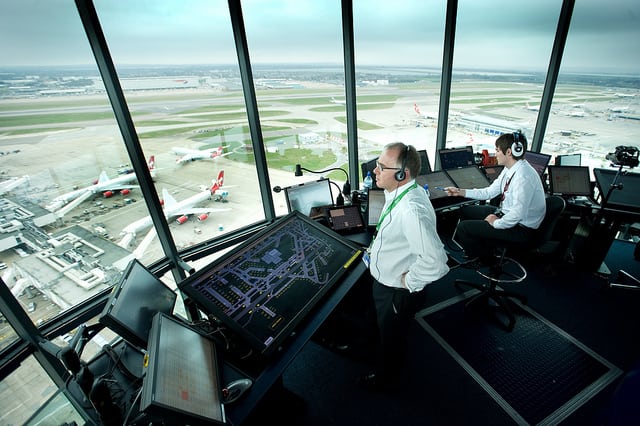 |
| ATCs overlook operations from inside the Heathrow tower. Photo: NATS (flickr) |
[Avionics Today 03-30-2015] Time-Based Separation (TBS), a new way of separating arriving aircraft by time instead of distance in order to cut delays caused by strong winds has gone live at Heathrow Airport as part of a phased introduction this year.
Traditionally, Air Traffic Controllers (ATCs) separate flights by set distances dependent on the aircraft type and the size of the spiraling air turbulence — or wake vortex — they create as they fly. During strong headwinds aircraft fly more slowly over the ground resulting in extra time between each arrival resulting in cancellations or delays. At Heathrow, for example, the number of aircraft can drop from 40 to 32 arriving each day.
To combat this, TBS takes live wind data from the aircraft to dynamically calculate the optimal safe spacing between each aircraft in order to maintain the landing rate, which is expected to reduce current headwind delays at the airport and the need for airlines to cancel flights. The TBS tool has been developed by NATS with Lockheed Martin, building on a Single European Sky ATM Research (SESAR)-based solution. While it is initially being introduced at Heathrow, researchers are looking to extend its use to other airports in the U.K. and beyond.